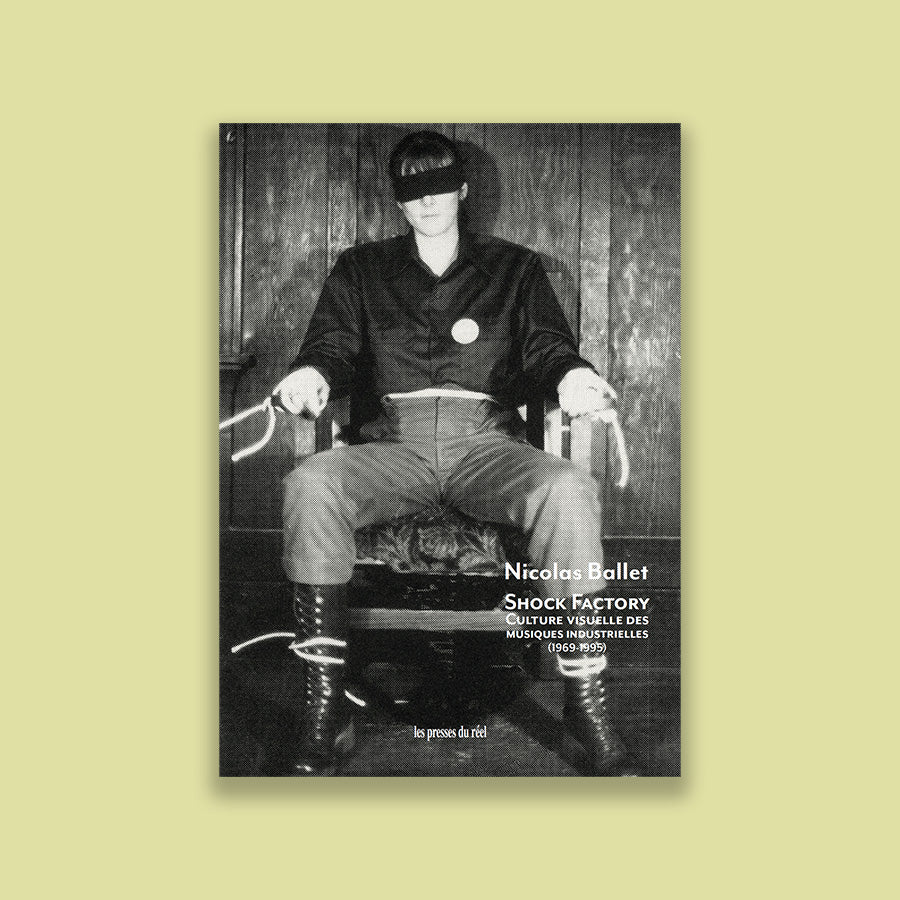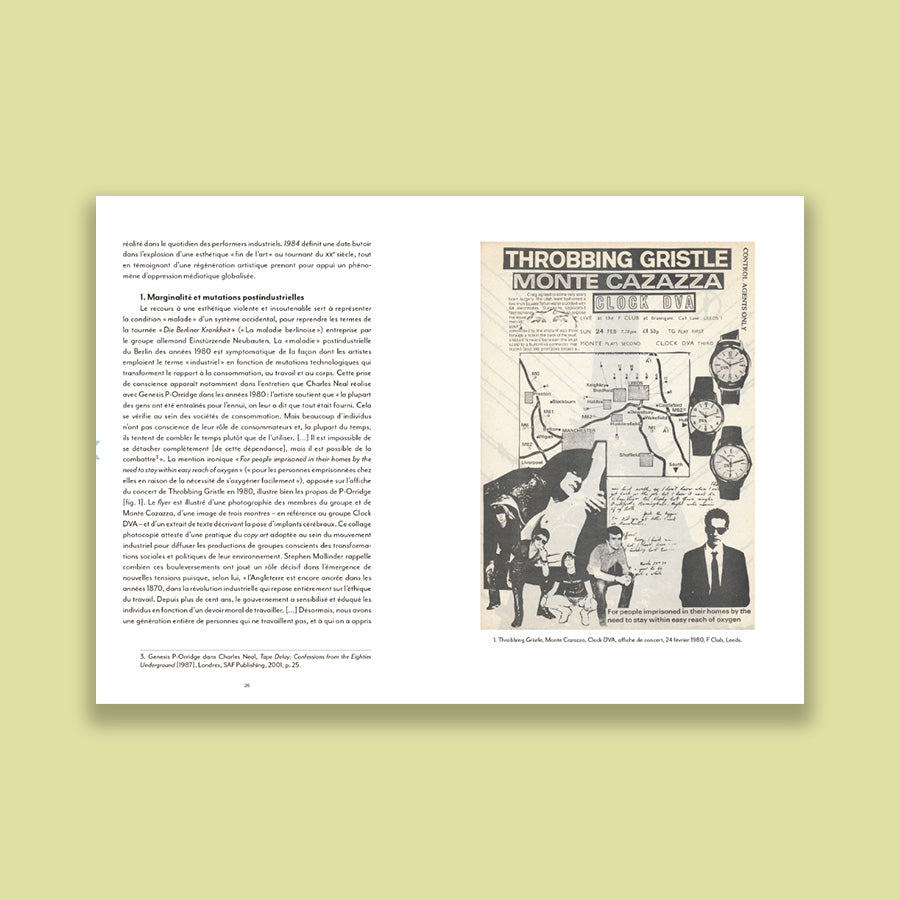Shock Factory
- Authors: De (auteur) Nicolas Ballet, Préface de Pascal Rousseau
- Publishers: PRESSES OF REALITY
- Date of Publication: 2023-09-15
- Pages: 456
- Dimensions: 240mm x 170mm
The industrial music movement, which appeared in the mid-1970s, far from
sticking to a phenomenon of sound experimentation has produced in a few years
a global visual culture crossing numerous artistic practices
(collage, mail art, installation, film, performance, sound, video), in a
close dialogue with the heritage of modernity and under the growing influence of
technologies. This British phenomenon is the start of a movement that is experiencing a great
development in Europe, the United States and Japan during the 1980s.
Development of synthesizers, manipulation and transformation of recorded sounds
from audio tapes, recycled or designed by artists,
sound experiments deployed by industrial groups enrich
a range of radical visual productions, taking their sources from the
modernist utopias of the first part of the 20th century. The saturated sounds and
dissonant images are translated into abrasive images, altered by a diversion of
reprographic techniques (Xerox art) which invest ambivalent themes,
at least controversial for the time: mind control, criminality,
occultism, pornography, psychiatry and totalitarianism, among others.
This book aims to inscribe the visual project of industrial culture in a
general history of art by analyzing the dissidence of a scene that anticipates
current issues surrounding the media and their coercive power.
Share



